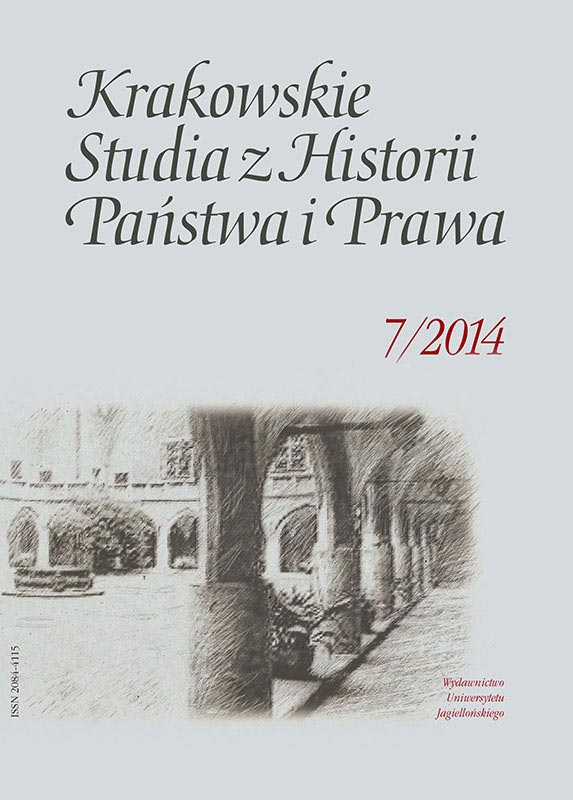Custom and Statute: A Brief History of Their Coexistence in Poland
Custom and Statute: A Brief History of Their Coexistence in Poland
Author(s): Anna KarabowiczSubject(s): Law, Constitution, Jurisprudence, History of Law
Published by: Wydawnictwo Uniwersytetu Jagiellońskiego
Keywords: custom; customary law; statute; privilege; statutory law; king; parliament; coexistence of custom and statute; domination of customary law; development of the statutory law system
Summary/Abstract: The present paper briefly surveys the developmental lines along which Polish customary and statutory legal systems have evolved. Emphasis is placed on the time period up until the Third Partition of Poland. Originally, Polish law formed a customary system. However, in the course of centuries, this system was partially modified by statutory law, the statutes being first the creation of the monarchy and later that of the parliament. Customary law, however, remained predominant due to the power of the Catholic Church, as well as Poles’ reluctance to abide by Roman law. Between the thirteenth and fifteenth centuries, customary law began being compiled into various collections. At the same time, statutory law began to appear, for instance, in the form of royal privileges for the nobility, sometimes issued in consultation with a large body of the monarch’s advisors assembled in so-called colloquia. The latter, as the proper place for the monarch to adopt statutory rules, laid the foundation for future parliamentary structures. Thus, customary and statutory law coexisted in Poland during this time period. Land law, on the other hand, was overwhelmingly customary in nature even in the fifteenth century. Then, in the sixteenth century, attempts were made to replace the custom with a codified land law system. The statute frequently performed a complementary role vis-à-vis the custom and supplemented principles contained therein. In some cases, however, the statutory law would contradict older practice and tradition, thereby introducing new norms. In the sixteenth century, when regular parliaments (Sejms) began to fully function, the old ius ducale, which once allowed the monarch to intervene in the substance of customary law, ceased to exist. Additionally, the nobility, who controlled Sejm activities, showed no real intention of intervening in the custom. Ultimately, during the mid-sixteenth century, the legislative nature of customary norms ceased to be questioned. Two old Polish institutions – life annuity between husband and wife and the securing of a loan by mortgage – exemplify the predominant role of the custom over the statute. This tendency is particularly evident in penal law, homicide being a prime example. Statutory law, on the other hand, was more successful in the area of procedure. However, it is possible to encounter the same tendency as in the aforementioned institutions of private and penal laws, an example being the old Polish possessory trial. The coexistence of the custom and the statute in the Polish legal system is supported by a long-lasting tradition, the role of the custom being not entirely eliminated even today
Journal: Krakowskie Studia z Historii Państwa i Prawa
- Issue Year: 7/2014
- Issue No: 1
- Page Range: 111-131
- Page Count: 21
- Language: English

